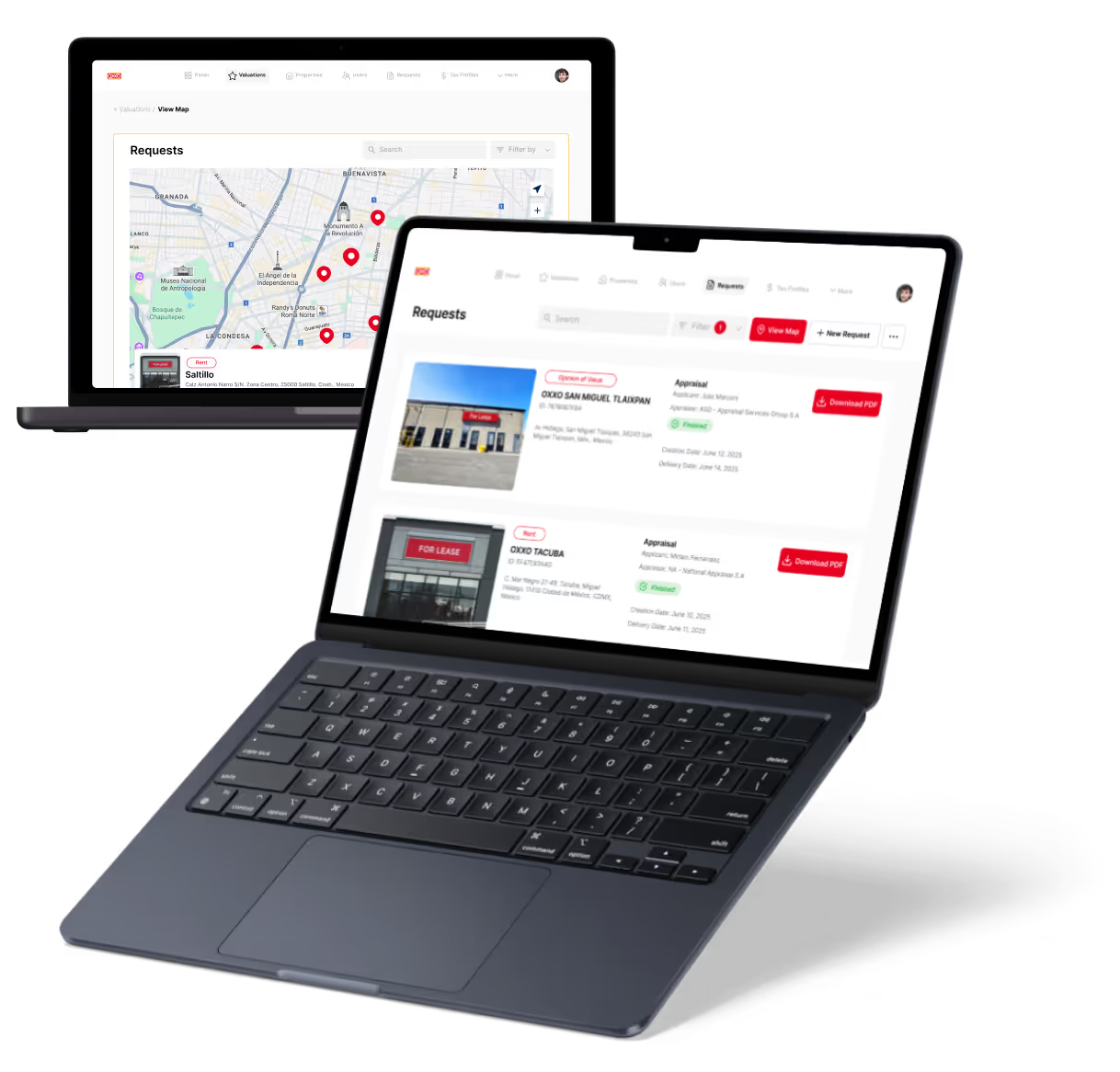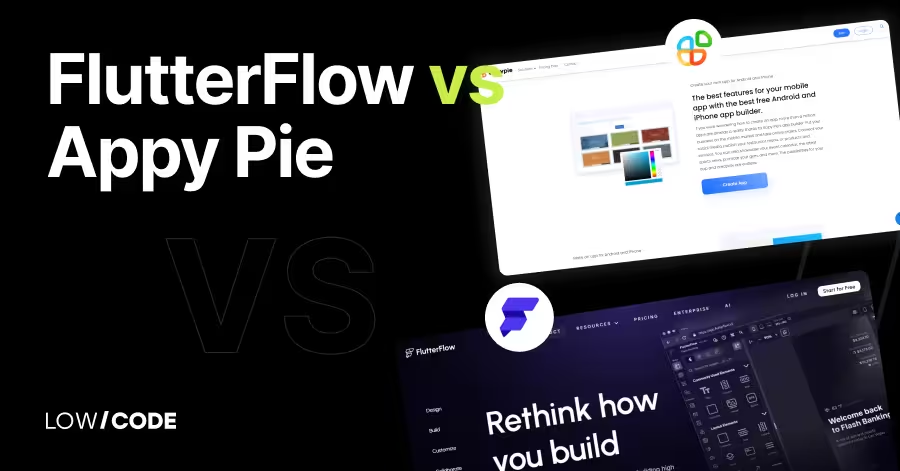Bubble vs OutSystems | 10 Factors to Decide the Best One
14 min
read
Compare Bubble vs OutSystems for web and mobile app development. Find out which no-code or low-code tool fits your team’s goals in 2025

Bubble is ideal for non-technical users and startups building full-featured web or mobile apps without writing code. It powers over 3 million users and helps founders launch fast.
OutSystems, used by large companies like Toyota and Logitech, blends visual tools with code for enterprise-scale apps. It’s low-code, powerful, and built for professional IT teams.
This guide compares both platforms across design, backend, performance, and integrations to help you choose the best one for your project.
Quick Comparison Table - Bubble vs OutSystems
1. What’s the core difference between Bubble vs OutSystems?
The core difference between Bubble and OutSystems is their target audience and level of complexity.
Bubble is a no-code platform built for solo founders, small teams, and startups. It lets you create fully functional web and native apps without writing code. Bubble is visual, flexible, and great for MVPs, SaaS, and internal tools.
OutSystems is a low-code platform designed for large businesses and enterprise IT teams. It supports full-stack development with visual tools, but also allows code when needed. It’s better suited for complex systems, large apps, or apps that need to connect with enterprise databases and APIs.
If you’re a non-technical founder building a startup, Bubble is easier and faster. If you’re part of a large company needing advanced integration, control, and enterprise-grade deployment, OutSystems is the better fit.
2. Visual builder and design flexibility
Let’s start with how much control you get over designing the user interface.
How easy is it to design responsive apps in Bubble?
Bubble gives full visual control using a drag-and-drop editor. You can place elements anywhere, style them, and set responsive rules for different screen sizes. It’s flexible and allows pixel-perfect design, even if you're not a designer.
Bubble recently added support for native mobile apps, so you can build mobile-friendly layouts too. Unlike many tools, you don’t need templates—you can build your UI from scratch. Responsive design can be tricky at first, but Bubble gives you the tools to make it work. For non-technical founders or startups wanting custom UI without code, Bubble is a strong option.
Does OutSystems allow full UI control with code support?
Yes. OutSystems combines a visual UI builder with full code access when needed. You can design pages visually, drag in components, and then fine-tune them with CSS or JavaScript. It supports reusable UI elements and design systems, making it ideal for enterprise-grade apps. OutSystems also lets teams define complex responsive layouts across web and mobile apps.
While the platform is more complex than Bubble, it gives professional developers everything they need to deliver polished UIs with control over styling and behavior. It’s best suited for teams that want both visual speed and technical depth.
Read more about:
3. Backend logic and workflows
Now let’s explore what each tool offers behind the scenes.
What backend capabilities does Bubble offer?
Bubble lets you build the backend without writing code. You can create custom databases, set user permissions, and design workflows for data processing, API calls, or triggers. Workflows can be based on user actions, scheduled times, or backend events.
Bubble also has built-in support for sending emails, handling payments, or connecting to third-party tools. While it’s not as advanced as code-based platforms, it’s strong enough for most startup or small business apps. You can also build and manage backend logic visually using a simple editor.
How does OutSystems handle backend and system workflows?
OutSystems offers powerful backend features that work for both simple and enterprise-level needs. You can build logic visually using flowcharts and diagrams, or you can write custom code for more control. It supports background jobs, APIs, scheduled tasks, and complex data rules.
It also allows integration with external databases and legacy systems, which is important for large organizations. OutSystems is used by developers who need to create backend logic that connects across systems and follows security standards. It offers more backend control than Bubble but also has a higher learning curve.
4. Hosting and scalability options
Let’s see how your apps are deployed and how they grow with users.
How does Bubble handle hosting and auto-scaling?
Bubble hosts all apps on its cloud servers. You don’t need to manage servers, and deployment is just a click away. It automatically handles updates, SSL, backups, and scaling. Bubble apps can grow with your user base, but speed depends on how well your workflows and database are built.
Higher-tier plans give better performance and more capacity. For small to medium projects, Bubble’s hosting is fast and reliable. You can’t self-host, but you do get a secure and simple deployment process managed by Bubble.
Can OutSystems be hosted on-premise or in the cloud?
Yes. OutSystems offers flexible hosting options. You can host apps on public cloud (like AWS or Azure), private cloud, or even on-premise servers. This is a big advantage for enterprises with strict data policies. OutSystems also supports container-based deployment using Docker and Kubernetes.
You get full control over your infrastructure and scaling setup. The platform ensures uptime, load balancing, and enterprise-grade monitoring. For teams needing custom hosting or advanced deployment workflows, OutSystems is a better fit than fully-managed tools like Bubble.
5. Security and compliance
Security matters for any app—let’s see how each tool handles it.
Is Bubble secure enough for public apps?
Yes. Bubble includes standard security features like SSL encryption, user authentication, and privacy rules for database access. You can define who sees or edits what data. It’s secure enough for most web apps and small businesses. Bubble also lets you manage cookies, session timeouts, and password policies.
However, it doesn’t offer compliance certificates like HIPAA or SOC 2 yet, which may be needed for regulated industries. If you’re building public apps like marketplaces, SaaS, or internal dashboards, Bubble is secure enough for launch and early growth.
What enterprise compliance does OutSystems support?
OutSystems is built for enterprise security. It includes full compliance with standards like SOC 2, HIPAA, ISO 27001, GDPR, and OWASP. You also get detailed role-based access control (RBAC), audit logs, identity providers (like SSO), and secure deployment workflows.
It’s trusted by banks, healthcare providers, and government agencies. Security is built into every layer—code, hosting, and data access. For large companies that need legal compliance or advanced protection, OutSystems offers a much higher level of control and certification than Bubble.
Read more about:
6. Integrations and external systems
Now let’s look at how each platform connects with other tools and services.
Which tools and APIs does Bubble integrate with?
Bubble supports external integrations using its API Connector and plugin marketplace. You can connect to REST APIs, set up webhooks, or use third-party tools like Stripe, SendGrid, Twilio, Zapier, and Make. It also allows database connections using plugins.
While some advanced setups may require workarounds, Bubble handles most startup needs well. You can also build your own plugins if you need custom functionality. For most small to mid-size apps, Bubble’s integration features are more than enough, especially for SaaS tools, client portals, or marketplaces.
Can OutSystems connect with enterprise databases and services?
Yes. OutSystems is designed for deep integrations. It can connect with Oracle, SQL Server, SAP, Salesforce, Active Directory, and more. You can integrate with REST, SOAP, and GraphQL APIs easily, and even use connectors from its Forge marketplace. Developers can also build custom extensions using .NET or Java.
OutSystems handles large data models, complex workflows, and real-time data sync. It’s ideal for businesses needing connections to legacy systems, ERPs, or enterprise tools. If your team needs secure, scalable, and powerful integrations, OutSystems is a better fit.
7. Performance and reliability
Let’s compare how each platform performs with real users and live traffic.
Is Bubble reliable for live web applications?
Yes. Bubble hosts your app on cloud infrastructure and handles uptime, SSL, and backups. Its apps are stable and reliable for public users. Bubble automatically scales your app as traffic grows, depending on your plan level. Performance depends on how you structure your database and workflows—bad logic can slow things down.
For better speed, you can use backend triggers, optimize pages, or upgrade to a dedicated server. Bubble works well for MVPs, SaaS tools, and dashboards. It’s fast enough for most user-facing apps when built carefully.
How does OutSystems perform at enterprise scale?
OutSystems is built to handle large-scale applications. It uses containerized deployment, load balancing, and enterprise-level monitoring. Apps can handle high traffic, complex data, and multiple user roles with ease. You can fine-tune performance using custom code, caching, and background processing. It also supports CI/CD pipelines and performance testing.
OutSystems is trusted by banks, telecom companies, and large teams that need high-speed and uptime. It’s much more suited for mission-critical or large enterprise apps than Bubble, which focuses more on flexibility for smaller teams.
8. Learning curve and user skills
Now let’s talk about who each platform is made for—non-coders or developers.
Is Bubble easy for non-technical founders?
Yes. Bubble was made for non-coders and startup founders. You don’t need to write code to build a working web or mobile app. The visual editor lets you design pages, create workflows, and manage data all in one place.
It may take a few weeks to learn fully, but Bubble offers tutorials, templates, and a large community. Once you understand how workflows and conditions work, you can build advanced apps like CRMs or SaaS tools. It’s perfect for solo founders, small teams, or anyone who wants to launch quickly.
Is OutSystems better for IT teams and developers?
Yes. OutSystems is designed for professional developers and IT teams. It uses a low-code approach, which means you can build apps visually but still add code when needed. It’s best for teams that understand databases, backend logic, and system architecture.
Non-technical users may find it complex. OutSystems also supports agile development, version control, and DevOps tools. If your organization has tech staff and needs to build complex or secure apps across departments, OutSystems gives the flexibility and power that a visual-only tool like Bubble can’t offer.
Read more about:
9. Support and ecosystem
Lastly, let’s see how each platform helps users learn and grow.
What support and community resources does Bubble offer?
Bubble has an active and helpful community forum where users share tips, templates, and solutions. You also get access to free tutorials, video guides, and documentation. Paid support options are available for higher plans. Bubble’s plugin marketplace lets you extend features, and many agencies now specialize in Bubble development.
The learning curve is manageable with the help of community courses and real-world examples. Bubble’s ecosystem is growing fast, especially for no-code founders and startups who want quick results without a tech team.
What support and training does OutSystems provide?
OutSystems offers enterprise-level support, including dedicated onboarding, training programs, and certifications. Teams can learn through OutSystems Academy, which offers structured courses for developers and architects. You also get access to documentation, forums, and the Forge marketplace for reusable components.
Support is available through chat, ticketing, and account managers, especially for enterprise clients. OutSystems focuses heavily on professional training to help companies build scalable solutions faster. It’s a full ecosystem built for long-term use in enterprise environments.
10. Final verdict – Bubble or OutSystems?
Here’s how to choose the right platform for your next project.
When to choose Bubble over OutSystems
Choose Bubble if you’re a startup founder, small business, or non-technical team looking to launch a full web or mobile app without code. Bubble is ideal for building SaaS apps, client portals, dashboards, or MVPs.
You can design custom UIs, manage your backend, and integrate with external tools—all without writing a single line of code. It’s also much more affordable and faster to learn than enterprise tools. If you want flexibility, ease of use, and visual development for public-facing apps, Bubble is a solid choice.
When to choose OutSystems over Bubble
Choose OutSystems if you're part of an IT team or enterprise that needs to build complex, scalable, and secure apps. OutSystems combines speed with developer control. It supports large databases, complex workflows, and enterprise-grade integrations.
You can host apps on-premise, connect with legacy systems, and follow compliance requirements like HIPAA or SOC 2. OutSystems is best for companies that want full-stack development with visual tools but also need code-level control. It’s perfect for internal systems, portals, or mission-critical apps across large teams.
Created on
July 3, 2025
. Last updated on
December 11, 2025
.

FAQs
Can Bubble handle native mobile apps now?
Does OutSystems require coding skills?
Which platform is better for startups?
Can OutSystems build mobile and web apps together?
Does Bubble offer API support and plugins?
Which one has better long-term support and training?







%20(Custom).avif)





![FlutterFlow vs Glide: A comparison of 13 key factors [2024]](https://cdn.prod.website-files.com/61cbe22a00483909d327afc6/66393c044a2ebd6d8c947cd2_65f9ee64f83d33821860fa3d_Slide%252016_9%2520-%25203%2520(1).avif)
.avif)

